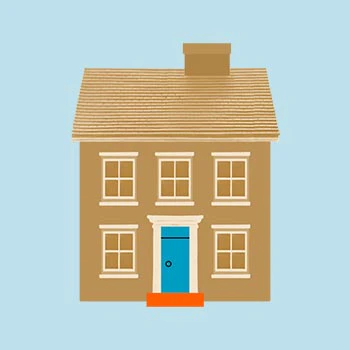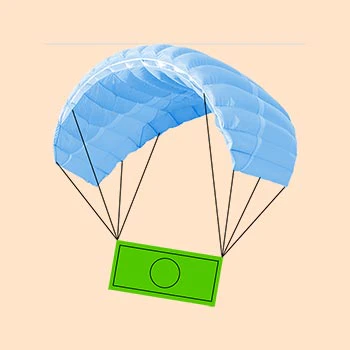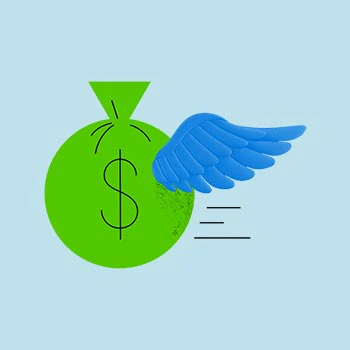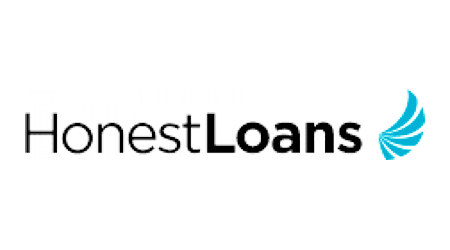Best emergency loans of 2025
Updated . When you need money fast, these options can help.
Need money today? If you're facing a true financial emergency, start with the fastest options: existing credit cards, cash advances, or asking family/friends. Emergency loans typically take 1-7 days even with the fastest lenders.
Editorial Note: CreditVana receives compensation from certain third-party advertisers, but this doesn't influence our editors' opinions or reviews. Our partners don't review, approve or endorse our editorial content. Information about financial products not offered by CreditVana may be collected independently. We strive for accuracy at the time of publication.
Our top emergency loan picks
How we picked: We prioritized funding speed, accessibility for various credit profiles, and reasonable terms for emergency situations.
Fastest funding: LendingClub
Why it stands out: LendingClub offers next-business-day funding for approved loans, with a streamlined application process and competitive rates for borrowers with good credit.
- Speed: Funds as fast as next business day after approval and verification.
- No fees: No origination fees, prepayment penalties, or late fees.
- Loan amounts: $1,000 to $40,000 with 3-5 year terms.
- APR range: 8.98% to 35.89% based on creditworthiness.
- Credit requirements: Minimum 600 credit score typically required.
Best for bad credit: OppLoans
Why it stands out: Accepts borrowers with poor credit and reports payments to credit bureaus to help build credit history. Fast approval and funding process.
- Credit flexibility: No minimum credit score requirement.
- Quick process: Online application with funding in 1-2 business days.
- Credit building: Reports payments to all three major credit bureaus.
- Loan amounts: $500 to $4,000 with 9-37 month terms.
- Higher costs: APRs range from 59% to 199%, but lower than payday loans.
Best for good credit: Marcus by Goldman Sachs
Why it stands out: Offers competitive rates and no fees for borrowers with good credit. While not the fastest, provides excellent terms for non-urgent emergencies.
- Competitive rates: APRs from 7.99% to 24.99% for qualified borrowers.
- No fees: No origination, prepayment, or late fees.
- Flexible amounts: $3,500 to $40,000 with 3-6 year terms.
- Funding time: Typically 4-7 business days after approval.
- Credit requirements: Good to excellent credit preferred (660+ FICO).
Most flexible: Upgrade
Why it stands out: Combines personal loan and credit card features, allowing borrowers to access funds quickly and choose how to repay. Good for varying emergency needs.
- Dual functionality: Get a loan and a credit card for future emergencies.
- Fast funding: Personal loans fund in 1-4 business days.
- Credit building: Reports to all three credit bureaus to help improve scores.
- Loan amounts: $1,000 to $50,000 with 2-7 year terms.
- APR range: 8.49% to 35.97% depending on creditworthiness.
Best credit union: PenFed Credit Union
Why it stands out: Membership-based lender offering competitive rates and member-focused service. Anyone can join with a simple donation requirement.
- Member benefits: Competitive rates and personalized service.
- Easy membership: Open to anyone with a small donation to eligible charity.
- Rate advantage: Typically lower APRs than commercial lenders.
- Loan amounts: $600 to $50,000 with flexible terms.
- Funding time: Usually 2-5 business days after approval.
Best alternative: Earnin (paycheck advance)
Why it stands out: Not a loan but an advance on earned wages. Access up to $100-$750 per day of money you've already earned, with next-day funding available.
- Not a loan: Advance on wages you've already earned.
- No interest: Optional tips only, no mandatory fees or interest.
- Fast access: Instant or next-day funding available.
- Amount limits: Up to $100-$750 per day based on earnings.
- Requirements: Steady job with direct deposit and location tracking.
How we picked these emergency loan options
We prioritized funding speed, accessibility across different credit profiles, transparent terms, and reasonable costs for emergency situations. We considered both traditional loans and alternative funding methods that can provide quick access to cash.
What you should know about emergency loans
Emergency loans are designed for urgent financial needs like medical bills, car repairs, or unexpected expenses. Speed often comes at a cost—either higher interest rates or fees. Consider all options before borrowing.
Before taking an emergency loan
- Check existing credit: Credit cards or credit lines you already have.
- Ask family/friends: Personal loans from people you trust.
- Employer assistance: Some employers offer emergency loans or paycheck advances.
- Community resources: Local charities, religious organizations, or government assistance.
- Sell items: Quick cash from items you own but don't need.
Emergency loan terms to compare
Funding speed
The most critical factor in emergencies. Same-day funding is rare; next-day is fast; 2-7 days is typical for emergency loans.
Interest rates & fees
- APR range: Can vary from 8% for excellent credit to 200%+ for poor credit.
- Origination fees: Some lenders charge 1%-8% upfront.
- Late fees: Important to understand if you're already in financial stress.
- Prepayment penalties: Rare but worth checking if you plan to pay off early.
Loan amounts
Emergency loans typically range from $500-$50,000. Borrow only what you need for the immediate emergency.
Eligibility requirements
- Credit score minimums
- Income verification
- Bank account requirements
- Employment history
Tips for emergency borrowing
- Borrow only what you need: Emergency loans can be expensive—don't borrow extra.
- Have a repayment plan: Know how you'll pay it back before you borrow.
- Read all terms: Even in emergencies, understand what you're agreeing to.
- Consider the total cost: Factor in all fees and interest, not just the monthly payment.
- Avoid repeat borrowing: Use this as a one-time solution, not a recurring pattern.
Emergency loan red flags
- Guaranteed approval regardless of credit or income.
- Requests for upfront fees before loan approval.
- Pressure to borrow more than you requested.
- Unclear or hidden fees and terms.
- No physical address or proper licensing information.
- Extremely high interest rates without clear justification.
- Requirements to provide social security numbers via unsecured methods.
Types of emergency funding explained
Personal loans
Traditional installment loans with fixed payments. Best for larger emergencies when you need several thousand dollars and can qualify for reasonable rates.
Credit card cash advances
Immediate access if you have available credit. Usually expensive (fees + high APR) but instant if you need cash right now.
Payday alternative loans (PALs)
Small loans from credit unions designed as alternatives to payday loans. Better terms but limited amounts ($200-$1,000 typically).
Paycheck advances
Access to earned wages before payday. Apps like Earnin, Dave, or employer-provided programs. Usually small amounts but minimal cost.
Title loans
Use your car as collateral for quick cash. Very high risk—you can lose your vehicle. Extremely high interest rates. Generally not recommended.
Pawn shop loans
Quick cash using personal items as collateral. You get your item back when you repay, but lose it if you don't. High rates but less risky than title loans.
Avoid These Emergency "Solutions": Payday loans, cash advance stores, and auto title loans often trap borrowers in cycles of debt with extremely high costs. These should only be considered as absolute last resorts when all other options are exhausted.
Building an emergency fund after your loan
Once you've handled your current emergency, start building an emergency fund to avoid needing expensive loans in the future.
- Start small: Even $25-50 per month can build meaningful savings over time.
- Automate savings: Set up automatic transfers to a separate savings account.
- Use windfalls: Tax refunds, bonuses, or gifts can jumpstart your emergency fund.
- Target 3-6 months: Aim for 3-6 months of essential expenses as your long-term goal.
- High-yield savings: Keep emergency funds in accounts that earn interest but remain accessible.
Questions about emergency loans
- How fast can I get an emergency loan?
- The fastest emergency loans can fund within 1-2 business days. Same-day funding is rare and usually requires approval early in the business day. Most emergency loans take 2-7 days from application to funding.
- Can I get an emergency loan with bad credit?
- Yes, but options are limited and more expensive. Consider paycheck advances, credit union payday alternative loans, or lenders that specialize in bad credit before resorting to payday or title loans.
- How much can I borrow for an emergency?
- Emergency loan amounts typically range from $500-$50,000 depending on your income, credit, and the lender. Borrow only what you need for the immediate emergency to minimize costs.
- What's the difference between an emergency loan and a regular personal loan?
- Emergency loans prioritize speed over optimal terms. You might pay higher rates or fees for faster funding. Regular personal loans often have better terms but longer approval processes.
- Should I use a credit card or get an emergency loan?
- If you have available credit and can pay it off quickly, credit cards might be faster. For larger amounts or if you need structured payments, an emergency loan might be better.
- Will an emergency loan affect my credit score?
- Yes, applying creates a hard inquiry that may temporarily lower your score. However, making on-time payments can help build credit. Missing payments will significantly hurt your score.
- What documents do I need for an emergency loan?
- Typically: government ID, proof of income (pay stubs or bank statements), bank account information, and possibly proof of address. Online lenders often accept digital uploads for faster processing.
Important information: Emergency loans should be used for genuine financial emergencies only. Annual Percentage Rates (APRs) and terms vary significantly based on your credit profile and the urgency of funding needed. Faster funding often comes with higher costs. Always consider alternatives like existing credit, family assistance, or employer programs before taking high-cost emergency loans.
Emergency Loan Risks: Emergency loans can be expensive and should not become a pattern. Repeated emergency borrowing may indicate the need for budgeting assistance or emergency fund building. Consider speaking with a nonprofit credit counselor if you find yourself repeatedly needing emergency loans.
© 2025 CreditVana LLC. All rights reserved.











